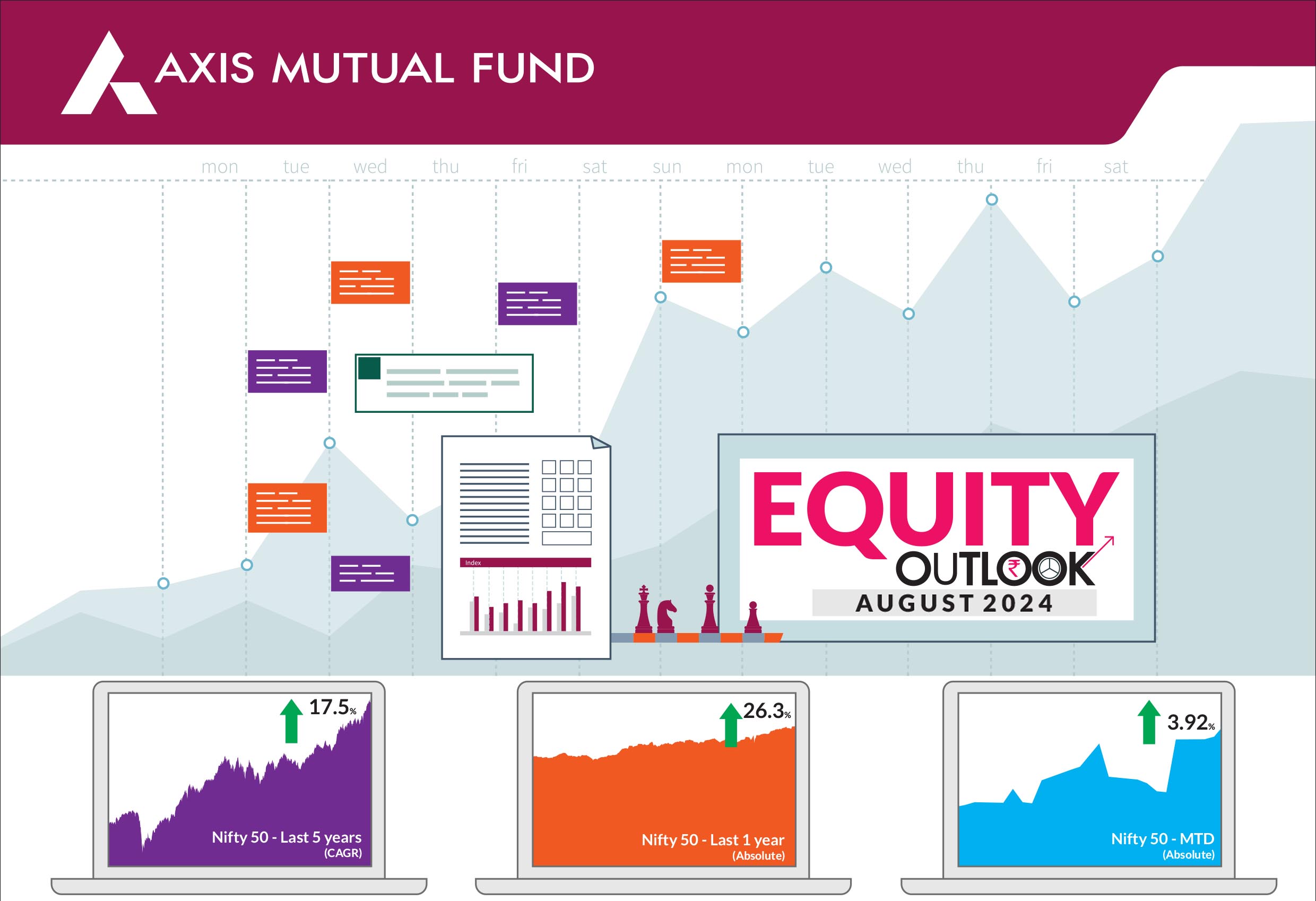Markets do remain overvalued across the
investment part of the economy and we may
see normalisation in some of these segments.
We remain bullish on equities
from a medium to long term
perspective.
Investors are suggested to have their
asset allocation plan based on one's risk
appetite and future goals in life.
 budget. Although markets saw a knee jerk reaction on the day of budget, they subsequently recovered and crossed all time highs. The BSE Sensex and the NIFTY 50 ended 3.4% and 3.9% up respectively. Amongst other indices, both the mid-caps and small caps gained during the month. The NIFTY Midcap 100 ended the month higher 5.8% while NIFTY Small Cap 100 ended 4.5% up. The number of stocks trading above their respective 200- day moving averages was higher at 95% in July vs. 88% in June. The advance-decline line was up 3% in July while volatility was down. Foreign Portfolio Investors (FPIs) bought equities to the tune of US$3.9 bn while domestic institutional investors remained strong with inflows of US$2.7 bn. For 2024, FPI net buying stood at US$4.3bn, while domestic institutions were net buyers at US$30.7bn. Meanwhile, the mutual fund industry reached a significant milestone as assets under management crossed the Rs60 trn mark. |
 |
 Two of the most awaited events - the elections and budget have finally passed. Markets have witnessed runup as well as volatility based on these events and all indices touched lifetime highs. With slowing global growth particularly in the US and markets being overvalued across the investment part of the economy,we may see normalisation in some of these segments. After 3 years of above 20% earnings growth, a slowdown is visible this quarter and growth is likely to be less than 15% this year. In addition, equity supply has also picked up with stake sales by promoters, PE and large pipeline of IPOs. These could be the likely triggers going forward in addition to the outcome of US presidential elections and global geopolitics. Having said that, any declines are likely opportunities to increase exposure to equities. One must remember that markets never move in a straight line but in cycles and it would be prudent to stay invested at all times based on investor goals, investment horizon and risk profile with a long-term view. India remains one of the fastest growing economies globally. Macros remain strong with an easing inflation cycle, progress of monsoons and robust economic growth. The government initiatives aimed at boosting employment is expected to aid consumption. Gradual signs are visible in the form of improving FMCG sales in rural areas, two wheeler sales and improving kharif crop sowing levels. We expect consumption growth to be broad based and an above normal monsoon coupled with the festive season to support this consumption. The trend of premiumisation continues, benefiting various segments within consumer discretionary. Automobiles, real estate, and high-end retail have all experienced growth. The housing sector is witnessing increased absorption across India, and with the government's emphasis on affordable housing, building materials and related industries are poised to benefit. We maintain our overweight stance in these sectors. Even though there is no change in the capex expenditure compared to the interim budget, it is a 17% growth on YOY terms, which in itself is a healthy figure. The fiscal discipline by the government will translate to crowding in for private investments. With the government also emphasizing on private capex, the entire curve of the capex cycle stands to benefit in light of multiple enablers such as deleveraged corporate balance sheets, healthy profitability, rising domestic demand, and increasing capacity utilization. Accordingly, we are overweight on the infrastructure, manufacturing, utilities and transport. We maintain a bias to holdings in sectors that can benefit from government policies such as energy, defense, power. We have an underweight in the export-oriented segment, attributing this to global economic slowdown. |
Source: Bloomberg, Axis MF Research.


